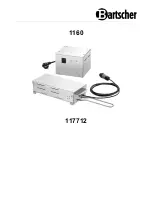
9
LINEAR FIELD TRANSDUCER CONSTRUCTION
Eminent Technology’s Linear Field Transducer, introduced as the LFT, represents a new
approach to the design and construction of a high-quality loudspeaker*. It builds on the strengths of
the above designs while eliminating many of their drawbacks.
DIAPHRAGM CONSTRUCTION
The construction of the LFT-12 diaphragm begins by laminating a very thin sheet of
aluminum foil to a half-mil-thick sheet of Mylar. A voice grid pattern, created by means of CAD
(Computer-Aided Design) technology, is silk-screened onto the foil side; the remainder of the
aluminum--the part not covered by ink from silk-screening is chemically etched away, in a manner
similar to the etching of traces on a printed-circuit board. The ink is then washed away, leaving a
voice grid of near perfect uniformity. This technique results in a diaphragm/voice coil grid that is still
less than two mils in total thickness, and also permits relatively narrow spaces between the individual
traces, so the diaphragm can be evenly driven over its entire surface.
With this construction, the entire diaphragm area of the LFT-12 is driven full range. For
midrange and high frequencies, the wavelength of sound is smaller than the diaphragm, making the
speaker very directional. This characteristic substantially improves performance for separation and
three-dimensional effects over speakers that use conventional cone drivers.
THE MAGNET / FRAME STRUCTURE
The magnet/frame structure developed for the LFT-12 is also unique. Eminent Technology
builds its magnets onto a steel plate and a series of channels. The magnets and steel channels have a
size and shape that have been carefully designed to help shorten the magnetic flux path and
concentrate the strength of the magnetic field on the appropriate area of the diaphragm/voice grid.
Two U.S. patents (4,837,838 and 5,901,235) have been granted to Eminent Technology on its
innovative magnetic circuits for flat panel loudspeakers.
Interestingly, one of the biggest challenges faced in creating a true push-pull dynamic speaker
was not a design consideration but rather a matter of construction difficulty: to assemble a rigid
structure with very powerful permanent magnets at the front and the rear, both sides opposing each
other with tremendous force.
***Warning*** This speaker should never be taken apart as it will
destroy itself upon removal of the hardware holding it together. Please consult the factory for
any service needs.
By applying such new techniques to planar loudspeaker construction, Eminent Technology
has been able to eliminate many of the flaws inherent in earlier designs and significantly reduce the
size.
Cloth is used on the back of the speaker to resistively load the diaphragm. This lowers the Q
of the diaphragm’s free air resonance. The planar-magnetic panels, which are derived from the LFT-
10 speaker, have a redesigned magnet structure, taking advantage of new Neodymium magnets to
increase efficiency.
The use of a welded channel and steel plate frame dispenses with the need for perforated
sheet metal (an “off-the-shelf” material presumably used for reasons of economy and ease of
manufacture.) thus greatly improving dispersion, especially at high frequencies.
Since it is now possible to have a powerful, precisely aligned magnet structure on both sides
of the diaphragm, true push-pull operation has been achieved: Regardless of the degree of excursion

































